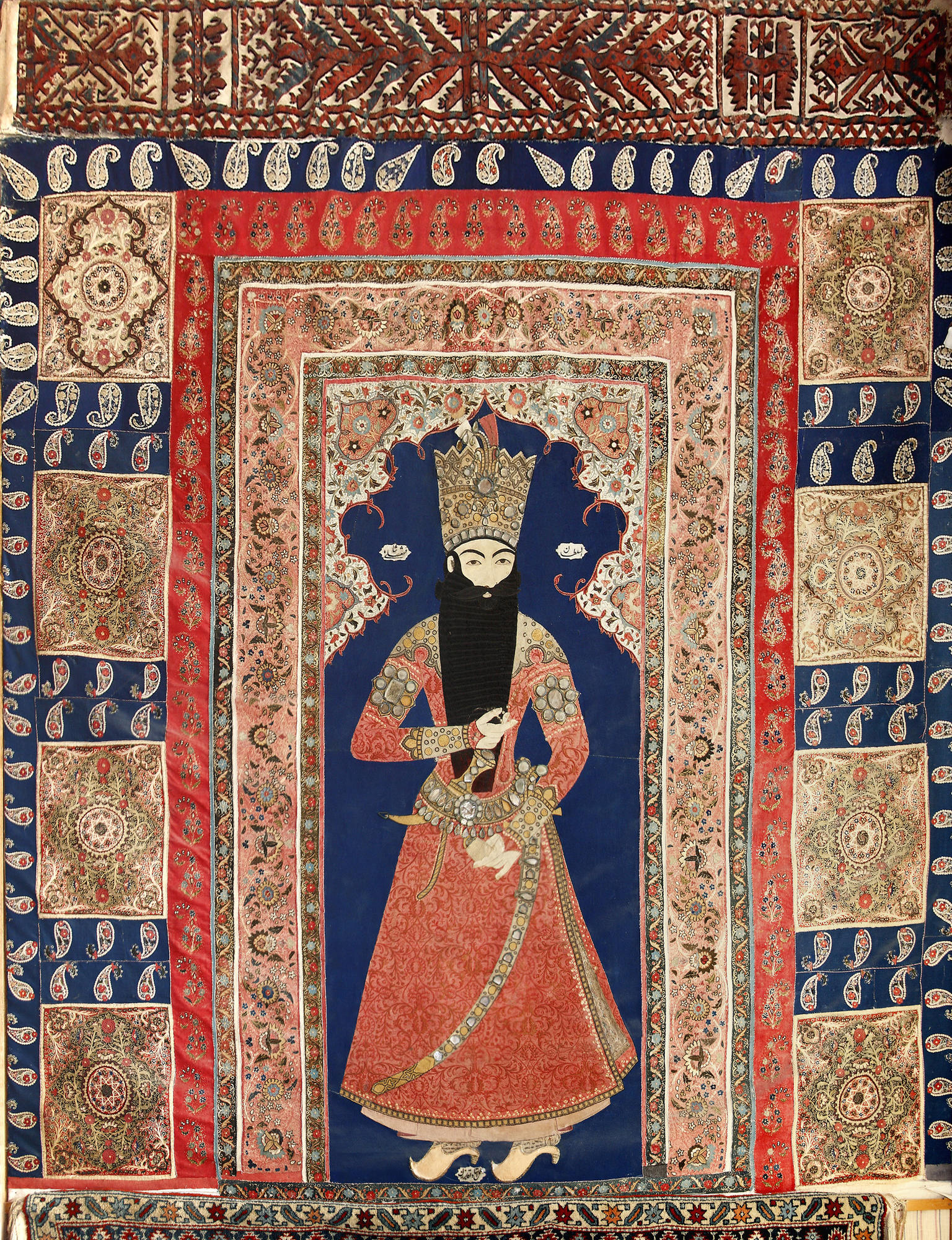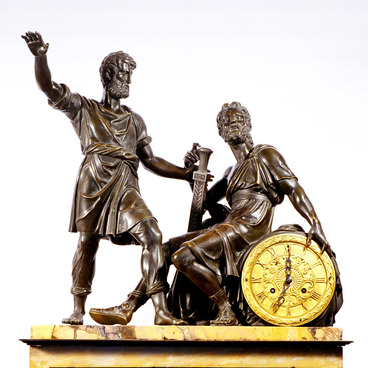On January 30, 1829, a mass murder occurred in Tehran at the Russian Embassy. Among the dead was the head of the diplomatic mission, writer Alexander Griboedov. This event led to a diplomatic row.
It is known that to resolve this conflict Persian Shah Fath Ali sent his grandson Khozrev-mirza to Russia. His job was to get an apology for the ambassador 's murder.
On the embroidery there are inscriptions showing that this is the work of Master Aga Bozorha from the city of Rechta. The carpets were made using the following technique: pieces of multicolored fabric, mica plates and transparent glass were joined together by a stitch that is currently considered lost. Another, still in use, chain-stitch is used on the surface and forms a complex decorative framing of the images.
During the reigning of Fatah Ali Shah, the Kadjar style spread in Persia. It is characterized by special luxury, pomp. The basis of the style was the demonstration of greatness, solemnity and luxury. The Kadjar style reflected the tastes of the main customer - Fatah Ali-Shah, who tried to emphasize his peculiarity in every way, imitating the rulers of ancient Persian dynasties.
Fatah Ali Shah is presented, according to the European tradition of the grand portrait, full height against blue background. He’s wearing heavy, floor-length gown. The Shah 's luxurious ceremonial garment includes a high crown. Despite borrowing elements of Western European art, the works of Kadjar masters have very strong picturesque tradition of the Middle Ages - bright local colors and abundance of ornament. The Images are framed with strips of interlaced plant ornament. There are signs in Persian language near the head and feet.
As compensation, Khozrev -mirza brought gifts to the Russian emperor. Presumably, Persian carpets were among the gifts.
Today, several similar carpets are located in the Hermitage, and two in the Alupkin Museum-Reserve.
The carpets show the Persian shah Fath-Ali.
On the embroidery there are inscriptions showing that this is the work of Master Aga Bozorha from the city of Rechta. The carpets were made using the following technique: pieces of multicolored fabric, mica plates and transparent glass were joined together by a stitch that is currently considered lost. Another, still in use, chain-stitch is used on the surface and forms a complex decorative framing of the images.
During the reigning of Fatah Ali Shah, the Kadjar style spread in Persia. It is characterized by special luxury, pomp. The basis of the style was the demonstration of greatness, solemnity and luxury. The Kadjar style reflected the tastes of the main customer - Fatah Ali-Shah, who tried to emphasize his peculiarity in every way, imitating the rulers of ancient Persian dynasties.
Fatah Ali Shah is presented, according to the European tradition of the grand portrait, full height against blue background. He’s wearing heavy, floor-length gown. The Shah 's luxurious ceremonial garment includes a high crown. Despite borrowing elements of Western European art, the works of Kadjar masters have very strong picturesque tradition of the Middle Ages - bright local colors and abundance of ornament. The Images are framed with strips of interlaced plant ornament. There are signs in Persian language near the head and feet.



